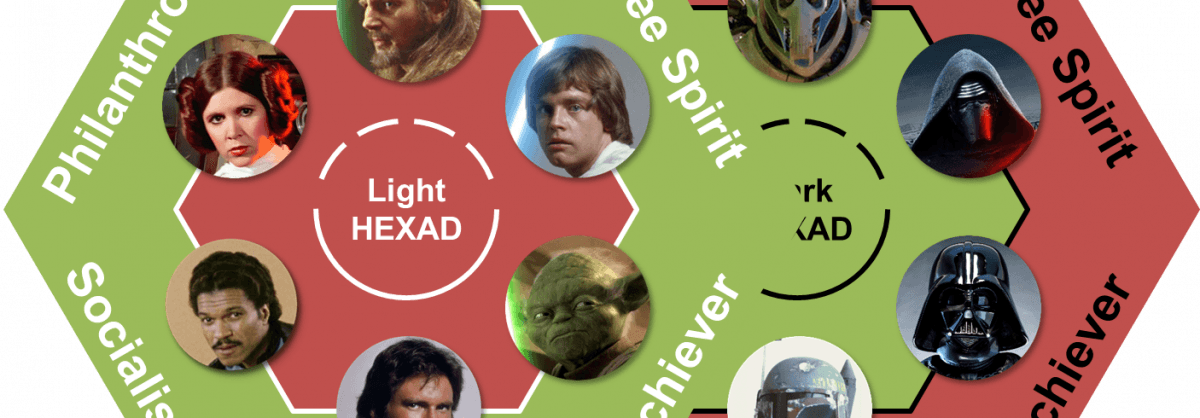There are many tools available to gamification designers to help them with their designs. One of the most useful for me, for reasons I will go into here, is the concept of User Types.
There are many views on user profiling and many ways to do it. Some people love it, some hate it. I am in the middle. It is a very useful tool, but it is not the only thing you should rely on. For me, they can be a useful way to understand or at least considers the motivation so those who will be using your system.
Bartle’s Player Types
In the games world there are a few famous player type models, Bartle’s Player Types being the most well known [1]. In these he breaks down players of his famous Multi-User Dungeon (MUD) game into 4 key types. Killer, Achiever, Socliasler and Explorer. Each type of player had a different motivation to play the game.
Very simply put, Killers are there to impose their will on other players, Achievers want to be the best at everything, Socialsiers want to meet people and Explorers want to explore the boundaries of the game.
He later created an expansion on the 4 types, by splitting them into 8 based on their behaviour being implicit or explicit. For example, if a killer was just plain out to hurt people, their killer behaviour could be considered implicit (they don’t realise they are doing it) and they are a Griefer. If they were more of a mother hen style character, who felt that imposing their will on others was actually for their benefit, the behaviour was explicit and they are a Politician!
Now, I could go further, but this is meant to all be about introductions. Suffice to say, Bartles Player Types are an amazing tool to help you design multi-player role-play games – that is what they were designed for. By his own admission, they are not well suited to other applications – even though they can be seen used in everything from gamification to marketing and sales!
Marczewski’s User Types
That brings us to my User Types or the HEXAD[2]. Again, as this is an introduction, long story short – I created these over the course of a couple of years to offer an alternative to Bartle’s types that was more applicable to gamification design. In fact, Bartle helped me build them. There has been a lot on this site about them, but a good place to start is on the User Types page . There has also been a fair amount of academic research done around them and a survey I created to help tell you what your User Type is [3][4].
In my model, I propose six types of users (at a basic level); four intrinsically motivated types and two others.
Achiever, Socialiser, Philanthropist and Free Spirit. They are motivated by Relatedness, Autonomy, Mastery and Purpose (RAMP: which you will remember from Part 4 of this series) [5].
The other two types, whose motivations are a little less black and white are Disruptor and Player.
The Types
Socialisers are motivated by Relatedness. They want to interact with others and create social connections.Free Spirits are motivated by Autonomy and self-expression. They want to create and explore.Achievers are motivated by Mastery. They are looking to learn new things and improve themselves. They want challenges to overcome.Philanthropists are motivated by Purpose and Meaning. This group are altruistic, wanting to give to other people and enrich the lives of others in some way with no expectation of reward.Players are motivated by Rewards. They will do what is needed of them to collect rewards from a system. They are in it for themselves.Disruptors are motivated by Change. In general, they want to disrupt your system, either directly or through other users to force positive or negative change. Read More ...





